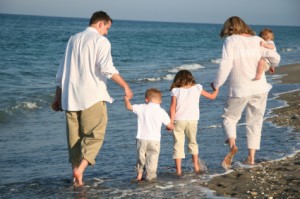Ecotourism has become something of a buzzword lately, but how many people can honestly say they know what it is or how to be a responsible tourist? The International Ecotourism Society is a good place to start learning about sustainable tourism and how anyone can green their next vacation. Founded in 1989, TIES has long set the standards for sustainable development and conservationism. The TIES mission and definition of ecotourism—“Responsible travel to natural areas that conserves the environment and improves the well-being of local people”—have been adopted around the world as the hallmarks of responsible tourism. Their website hosts a wide variety of information on ecotourism companies, where to find sustainable lodging, and how to make the most out of your vacation while reducing your carbon footprint.
how anyone can green their next vacation. Founded in 1989, TIES has long set the standards for sustainable development and conservationism. The TIES mission and definition of ecotourism—“Responsible travel to natural areas that conserves the environment and improves the well-being of local people”—have been adopted around the world as the hallmarks of responsible tourism. Their website hosts a wide variety of information on ecotourism companies, where to find sustainable lodging, and how to make the most out of your vacation while reducing your carbon footprint.
One of their most beneficial resources is a list of 10 simple things travelers can do to reduce their energy consumption while traveling (they also have a list of things travelers can do to avoid leaving a negative impact on the local culture, economy, and environment, which I’ll talk about in a later post). The list is pretty comprehensive and has some good tips that pretty much anyone can follow, making the list a must-read. For example, number 2 on the list is to “Travel Light” and pack only what you need, as reducing the weight of luggage reduces green house gas emissions. I know I have trouble packing light for trips—I am one of those people who sits in front of my suitcase asking, “What if it gets chilly at night and I need long pants? What if I see someone wearing the same swimsuit? Oh I have to bring my new dress!”—but it’s not difficult to remove some things you know you won’t wear and to remove anything that might become waste. The list also suggests unplugging household appliances and turning off lights before you leave your house, and turning off the lights, ac/heat, and appliances when you leave your hotel room, two-minute activities that can greatly reduce energy consumption. Eating locally is on the list, and that is a good way to experience the local culture while you reduce your energy footprint. After all, isn’t sampling local favorites and eating unique, locally grown fruits and vegetables half the fun of traveling?
Some of the items on the list are difficult for the average traveler, however. Minimizing air travel can be hard to do, especially if you’re traveling a long distance that requires several layovers. To reduce air travel they suggest staying longer in one location instead of making many shorter trips, but if you don’t have a lot of vacation time you might need the shorter trips to see everything you want to see. And while it’s always beneficial to save water by reusing sheets and towels, I can understand not wanting to reuse your sheets if you’re spending a lot of money for your room—though you can still take short showers and turn off the water while brushing your teeth and  save some water that way. But even if you can’t do everything on the list, even if there are no hotels with good sustainability practices where you are going or you can’t afford to donate to a credible carbon offsetting program to offset your unavoidable footprint (list items 3 and 10, respectively), looking it over and seeing what you can do is a great start. You don’t have to be a hippie backpacker willing to go days without showering and spend your vacation volunteering, to minimize your carbon footprint. Responsible tourism can take place on every trip every time.
save some water that way. But even if you can’t do everything on the list, even if there are no hotels with good sustainability practices where you are going or you can’t afford to donate to a credible carbon offsetting program to offset your unavoidable footprint (list items 3 and 10, respectively), looking it over and seeing what you can do is a great start. You don’t have to be a hippie backpacker willing to go days without showering and spend your vacation volunteering, to minimize your carbon footprint. Responsible tourism can take place on every trip every time.


